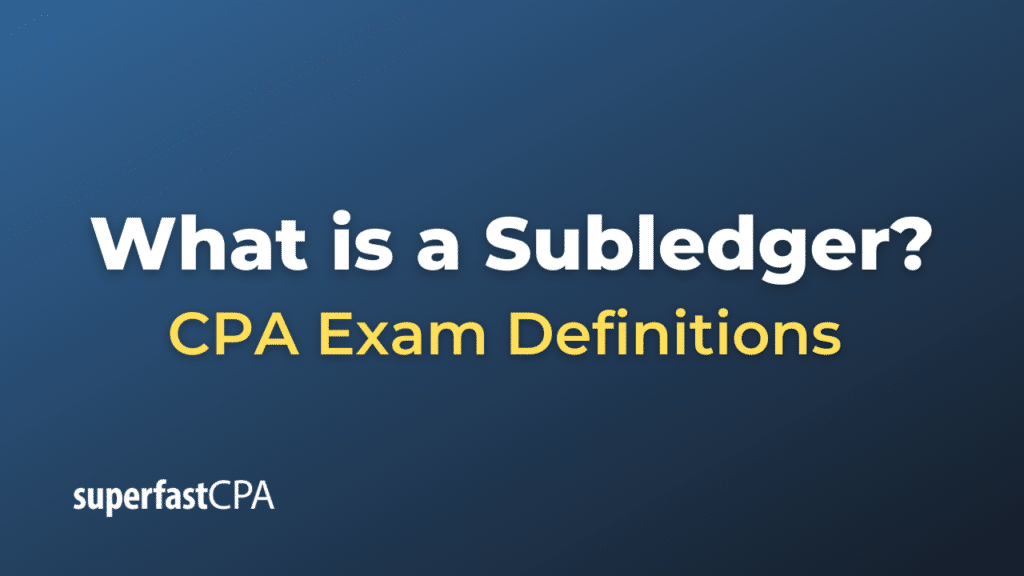Subledger
A subledger, also known as a subsidiary ledger, is a detailed record or set of accounts that supports and provides more detailed information about individual items within a main ledger (often referred to as the general ledger or control ledger). Subledgers break down the general ledger accounts into finer details, making it easier to track and manage specific transactions.
Each subledger corresponds to a specific general ledger control account. For example:
- Accounts Receivable Subledger: This provides details of amounts owed by each customer. The total of all balances in the accounts receivable subledger should equal the balance of the Accounts Receivable control account in the general ledger.
- Accounts Payable Subledger: This provides details of amounts owed to each supplier or vendor. The combined balance of the accounts payable subledger should match the balance of the Accounts Payable control account in the general ledger.
- Inventory Subledger: This might break down inventory into individual items or categories, showing quantities and costs for each. Its total value should reconcile with the Inventory control account in the general ledger.
- Fixed Assets Subledger: This can detail each asset owned by the company, its acquisition date, cost, accumulated depreciation, and net book value. The combined values should align with the respective control accounts in the general ledger.
The use of subledgers allows companies to keep their general ledger uncluttered and more summarized, while still maintaining detailed records for analysis, reconciliation, and auditing purposes. Periodically, the balances from these subledgers are reconciled to ensure they match the corresponding amounts in the general ledger control accounts.
Example of a Subledger
Let’s use the Accounts Receivable Subledger to illustrate how subledgers work in practice.
Scenario: “BrightTech Electronics Store”
Background: BrightTech Electronics Store sells various electronic products. They have several regular customers who buy products on credit. Each customer’s individual transactions and outstanding balances are tracked in an Accounts Receivable Subledger. At the end of each month, the total balance from this subledger is reconciled with the general ledger’s Accounts Receivable control account.
Subledger Entries:
On January 5th:
- Customer A purchases goods worth $1,000 on credit.
- Customer B buys products totaling $500 on credit.
On January 20th:
- Customer A makes another purchase of $1,500 on credit.
- Customer B pays off $300 of their previous balance.
The Accounts Receivable Subledger now has the following details:
| Customer | Opening Balance | Purchases | Payments | Closing Balance |
|---|---|---|---|---|
| Customer A | $0 | $2,500 | $0 | $2,500 |
| Customer B | $0 | $500 | $300 | $200 |
| Total | $0 | $3,000 | $300 | $2,700 |
End of January: The total amount from the Accounts Receivable Subledger is $2,700. This total should match the balance of the Accounts Receivable control account in BrightTech’s general ledger. If it does, then the accounts are in agreement. If not, discrepancies must be identified and rectified.
This example demonstrates the value of a subledger. Instead of cluttering the general ledger with every individual transaction for each customer, BrightTech can maintain a summarized Accounts Receivable balance in the general ledger, supported by the detailed records in the subledger. This not only simplifies the general ledger but also provides a mechanism for verifying the accuracy of account balances.













